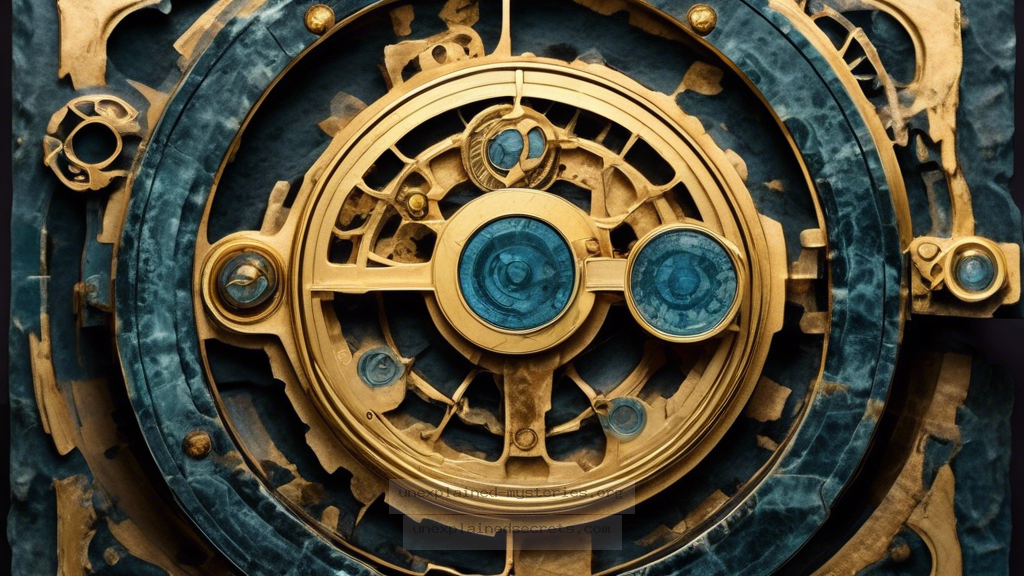What Secrets Does the Antikythera Mechanism Hold About Ancient Greek Technology?
What Secrets Does the Antikythera Mechanism Hold About Ancient Greek Technology?
The Antikythera Mechanism, often dubbed the world’s first analog computer, has captivated historians, archaeologists, and enthusiasts alike since its discovery in 1901. This remarkable artifact raises critical questions about the technological capabilities of ancient civilizations, particularly the Greeks. Despite extensive research, many aspects of the Mechanism remain shrouded in mystery, leading to debates about its origins, purpose, and the extent of ancient technological knowledge. Understanding the significance of this artifact is crucial as it challenges our perceptions of ancient societies and their achievements. In this post, we will delve into the mysteries surrounding the Antikythera Mechanism, exploring its historical context, core concepts, and the implications of its discovery.
Historical Context: The Discovery of the Antikythera Mechanism
The Antikythera Mechanism was discovered in 1901 by a group of sponge divers off the coast of Antikythera, a small Greek island. The divers stumbled upon a shipwreck dating back to around 60 BCE, where they recovered numerous artifacts, including the enigmatic bronze device. Initially, the mechanism’s true nature was misunderstood; it was thought to be merely a corroded lump of metal. However, subsequent examinations revealed a complex system of gears and inscriptions that suggested a far more sophisticated purpose.
Dating back over two millennia, the mechanism is believed to have been constructed in the late Hellenistic period, highlighting the advanced technological skills of the ancient Greeks. It comprises at least 30 gears housed within a wooden frame, indicating that its creators possessed a deep understanding of astronomy and mechanical engineering. The complexity of the device suggests that it was used to predict celestial events, such as eclipses, and track the cycles of the solar and lunar calendars.
Core Concepts: Understanding the Mechanism’s Functionality
The Antikythera Mechanism operates through a series of gears that translate the movement of the sun, moon, and planets into a mechanical representation of celestial events. The mechanism features a front dial and a rear dial, with the front displaying the solar calendar and the rear indicating the lunar calendar and the positions of the planets. By turning a hand-crank on the device, users could visualize the relationship between different celestial bodies at any given time.
Recent research has revealed that the mechanism could accurately predict eclipses using a sophisticated 19-year Metonic cycle, which aligns the lunar and solar calendars. This remarkable feature demonstrates the level of astronomical knowledge possessed by the ancient Greeks, who had been observing celestial patterns for centuries. The precision of the mechanism’s calculations has led some researchers to propose that it may have been used for educational purposes, enabling scholars to teach astronomy and mathematics effectively.
Alternative Theories: Who Built the Antikythera Mechanism?
While many scholars attribute the invention of the Antikythera Mechanism to ancient Greek artisans, some alternative theories suggest other possible origins. One hypothesis posits that the device may have been influenced by earlier Mesopotamian or Egyptian astronomical tools, which could have provided a foundation for Greek advancements. The scientific exchange between these ancient civilizations was common due to trade and cultural interactions, leading to a blending of ideas and technologies.
Another theory suggests that the mechanism could have been a product of the famed mathematician Archimedes or his contemporaries. Archimedes was known for his innovative inventions and understanding of mechanics, which aligns with the intricacies of the Antikythera Mechanism. However, there is no definitive evidence to support this claim, leaving the true identity of its creators an open question.
Common Misconceptions: Unpacking the Myths
Despite extensive studies, several misconceptions about the Antikythera Mechanism persist. One prevalent myth is that it was solely an astronomical device. While it indeed served this purpose, its functionality extended beyond mere celestial observation. The mechanism also likely played a role in religious and agricultural cycles, serving as a tool for predicting seasonal changes that were vital for farming and festivals.
Another misconception is the belief that the Antikythera Mechanism is the only ancient device of its kind. While it is the most complex known example, several other ancient artifacts suggest that various cultures were experimenting with similar technologies. For instance, the astrolabes of the Islamic Golden Age and the later medieval astronomical clocks demonstrate that the quest for understanding celestial movements was a widespread pursuit that transcended cultural boundaries.
Practical Implications: Lessons from Ancient Technology
The discovery and ongoing study of the Antikythera Mechanism have significant implications for our understanding of ancient technological capabilities. It challenges the traditional narrative that ancient societies were primitive, revealing that they possessed advanced knowledge in mathematics, engineering, and astronomy. This understanding can inspire modern technological innovation by encouraging a deeper appreciation for historical advancements.
Moreover, the mechanism serves as a reminder of the importance of interdisciplinary study. The collaboration between historians, archaeologists, and scientists has been crucial in deciphering the secrets of the Antikythera Mechanism. This collaborative approach can be applied to other fields, fostering innovation through the integration of diverse perspectives.
Future Developments: Research and Discoveries on the Horizon
Research on the Antikythera Mechanism is ongoing, with advancements in technology leading to new discoveries. Recent studies using 3D imaging and X-ray tomography have allowed researchers to analyze the intricate gear systems without causing further damage to the fragile artifact. These techniques have unveiled previously unknown inscriptions and functionalities, suggesting that our understanding of the mechanism is still evolving.
Furthermore, as scholars continue to explore ancient texts and artifacts, new insights into the cultural context surrounding the Antikythera Mechanism may emerge. The potential for future discoveries related to advanced ancient technology remains vast, and the Antikythera Mechanism serves as a focal point for this ongoing exploration.
Investigating Ancient Mysteries: Best Practices for Enthusiasts
For those interested in exploring ancient mysteries like the Antikythera Mechanism, there are several best practices to follow:
- Engage with Academic Research: Stay updated with the latest findings in archaeology and history. Journals and conferences are excellent resources.
- Participate in Workshops: Attend workshops or lectures at museums and universities to learn from experts in the field.
- Join Online Communities: Engaging with like-minded individuals through forums and social media can provide valuable insights and foster discussions.
- Visit Historical Sites: Exploring ancient sites and museums can provide a tangible connection to history and inspire further inquiry.
Conclusion: The Antikythera Mechanism as a Gateway to Ancient Knowledge
The Antikythera Mechanism is more than just an ancient artifact; it is a testament to the sophisticated understanding of science and technology possessed by the ancient Greeks. As we continue to unravel its mysteries, we are reminded of the interconnectedness of human knowledge across time and cultures. The ongoing research surrounding this remarkable device invites us to reconsider our views on ancient civilizations, emphasizing that they were capable of extraordinary achievements that laid the groundwork for future innovations.
Ultimately, the story of the Antikythera Mechanism serves as a reminder that the quest for knowledge is a timeless pursuit, urging us to look to the past to inspire our future.
Other Articles
Recent Posts
- What Happened to Flight MH370? The Conspiracy Theories That Still Haunt Us
- What Secrets Lurk Within the Walls of the Infamous Trans-Allegheny Lunatic Asylum?
- What Evidence Supports the Existence of Bigfoot in the Pacific Northwest?
- What Happened to the Indus Valley Civilization? Unraveling the Mysteries of Ancient Urban Life
- Can Telepathy Be Scientifically Proven Through Laboratory Evidence?







